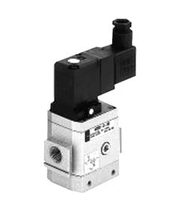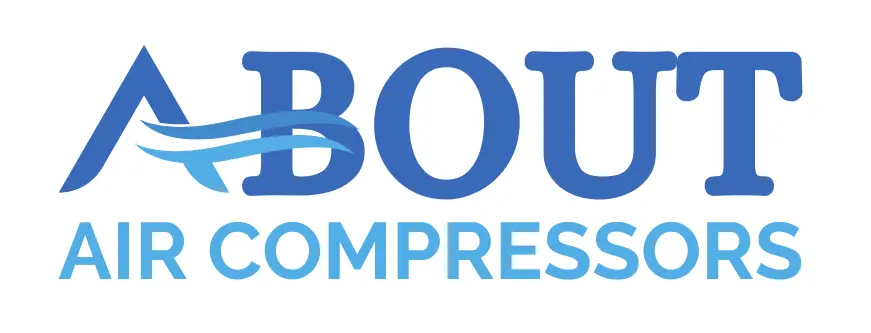Sometimes soft-start valves can prevent cylinder, actuator, and tooling damage on your air-driven equipment. This article will provide you with all the relevant information you’ll want to know about pneumatic soft start valves if you are designing or building a pneumatically driven machine.
Table of Contents
- What is a Pneumatic Soft Start Valve?
- How Does a Soft Start Valve Work?
- Why You Should Install a Soft Start Valve
- Soft Start Valve Types
- Automatic Soft Start Valves
- FAQs (Frequently Asked Questions)
What is a Pneumatic Soft Start Valve?
While perhaps not critical on a small, one or two air-cylinder piece of equipment, more complex machines may have dozens or hundreds of air cylinders or other air actuators, many running at very high speeds, and all finely timed to ensure that they will not interfere with each other when the equipment is running.
When that machine is being set up or being repaired, it is normal for the compressed air to be completely emptied from the machine with no compressed left in the airlines, air valves, or air cylinders. This is both for safety for the operator, and to enable a mechanic to easily move the air-driven tooling as they go about building, setting up, or fixing a piece of equipment. In step the pneumatic soft start dump valve.
Once the installation or maintenance work on that piece of equipment is complete, it is time to get the machine operational.

Industrial air mains will typically be pressurized well over 100PSI. What you do not want to do then is fully crack open a high-flowing main air valve and have fast-moving compressed air flooding the lines and pressurizing all of the air cylinders on the machine all at once.
Some of the air cylinders and other air-driven actuators will be in the correct position. Some will be left at mid-stroke, and others will be in the extended position when they are supposed to be in the retracted position on startup, or vice versa. That’s almost inevitable if a mechanic has been working on the machine. How would they know the start position of every cylinder?
How Does a Soft Start Valve Work?
At startup, there is no air in any of the lines. This means that even if the cylinders have flow controls, which work on controlling backpressure, there is no air in the cylinder to allow the flow control to moderate the speed of the cylinder piston.
By introducing air at full line volume and pressure, any wrongly-positioned air cylinder will respond at high speed with possibly catastrophic results. It is possible that cylinder pistons will crash into the end caps. Expect various end-of-rod tooling to collide. Think about the possible damage to the machine components as all these cylinders race to their home position.
That’s why a machine will perform more safely with a soft start valve.
Why You Should Install a Soft Start Valve
To prevent having to repair or to rebuild your equipment… again, consider installing a Soft-Start valve.
A soft-start valve will, at first, open the airflow to the machine just slightly. It will allow a very low flow of compressed air into the entire circuit, feeding the various actuators and bringing them slowly up to full operating pressure.
In so doing the gently flowing air will allow cylinders to cycle, very slowly and softly, to their home positions on the machine. No crashing, no banging, no damage to cylinders, tooling, or other components.
Once all of the air-driven equipment on the machine is up to a threshold of line pressure, during which all the cylinders reach home, then the soft-start valve opens fully, allowing the full volume of compressed air into the machine and it is ready to do work.
Soft Start Valve Types
There are a number of styles of soft start dump valves and ways to build a circuit with soft start inherent in the design.
One way to emulate soft start pneumatic valves is to install a 3 ported, 2 position manual valve upstream from the machine. This will allow the operator to shut off the compressed air supply to the machine completely and should allow the air already in the machine to bleed back upstream and out the exhaust port on that valve.
Caution is advised. It may be expected that all the compressed air will be dumped from the machine through this 3/2 valve. Depending on where the air valves are positioned, however, there may still be some compressed air trapped in cylinders on the machine.
Before starting work, make sure that the component you are working on is completely void of compressed air, and that no adjacent equipment is still charged. Any component with compressed air still trapped in it might inadvertently shift or activate suddenly!
When it comes time to re-start this machine, the operator manually opens this 3/2 valve a small amount and allows air to bleed back into the equipment slowly, until all actuators have shifted and the air circuits are full. At this point, the operator opens the valve all the way, and the system is ready to go.
Popular brands to look out for include:
Automatic Soft Start Valves
Automatic soft-start valves are available in a variety of configurations and styles. They can be electrically solenoid-operated like the one in the photo earlier on this page, they can be pneumatically operated or involve a combination of the above.
Regardless of whether you have an industrial soft start solenoid valve or a pneumatic soft-start valve, an integral pressure regulator senses the downstream pressure. The soft-start valve cannot open fully until the downstream pressure reaches the soft-start valve set point. Once the downstream pressure gets to the setpoint, the valve opens fully to allow the full flow of compressed air into the apparatus.
Installing a soft start valve upstream from the machine could save a lot of aggravation in replacing damaged components on the machine due to cylinders reacting to a high inflow of compressed air on startup.
FAQs (Frequently Asked Questions)
A soft start valve prevents air cylinders from slamming back to their home position after the main air supply is exhausted from the machine.
A pneumatic soft start valve works by releasing tiny bits of air, in small increments, so that the cylinders can start spinning and adjusting their positions slowly. They can assume their starting points, without the risk of any damage occurring. The speed can make all the difference between a safe stop and a preventable emergency.
Additional valve reading:
- Types of Compressed Air Valves – Guide To Pneumatic Valves
- Pneumatic Flow Control Valves – What Are They, How Do They Work?
- Air Compressor Air Line Non-Return valves/Inline (In The Air Line) Air Check Valves Explained
- Check Valve Sizes
- What is Check Valve Cracking Pressure
- Air Compressor Troubleshooting Check Valve
- Air Compressor Unloader Valve Explained
- Unloader Valves On Twin V Piston Compressor Guide
- 5 3 Valves Explained
- 5-2 Air Valves
- 4-2 Compressed Air Valves
- 3-2 Air Valves
- Drawing a 5/3 compressed air valve
- Draw A 5/2 Air Valve
- Pneumatic Soft Start Valves
- Solenoid Pilot Air Valves
- Compressed Air Solenoid Valve Guide
- Air Compressor Auto Drain Valves Guide
- Needle Valve vs Ball Valve
- Globe Valve vs Ball Valve
- Globe Valve vs Gate Valve
- Butterfly Valve vs Gate Valve
If you have any questions about soft start valves, please leave a comment below, with a photo if applicable, so that someone can help you!
